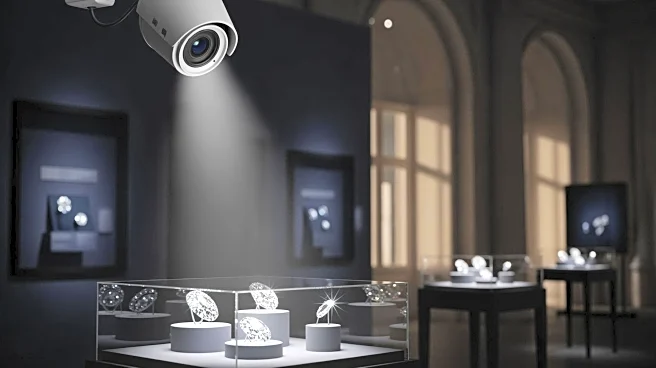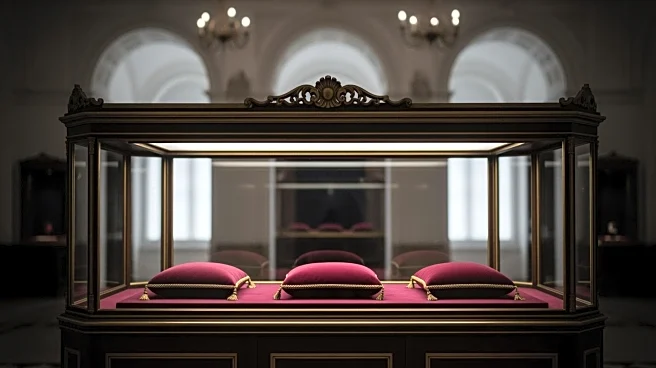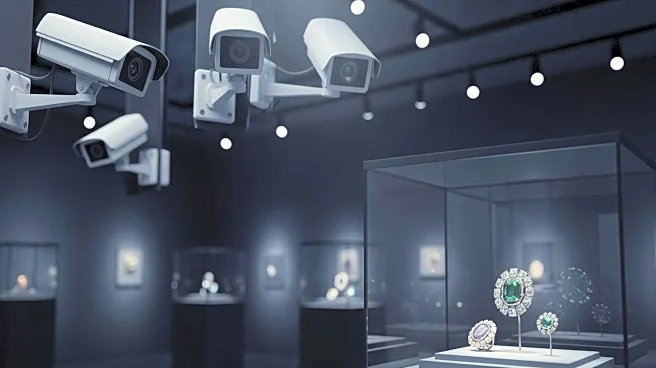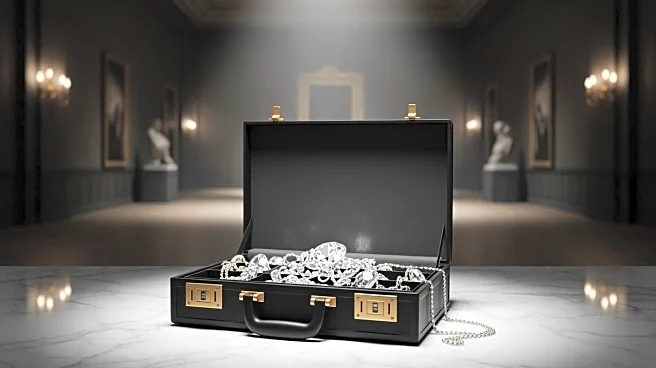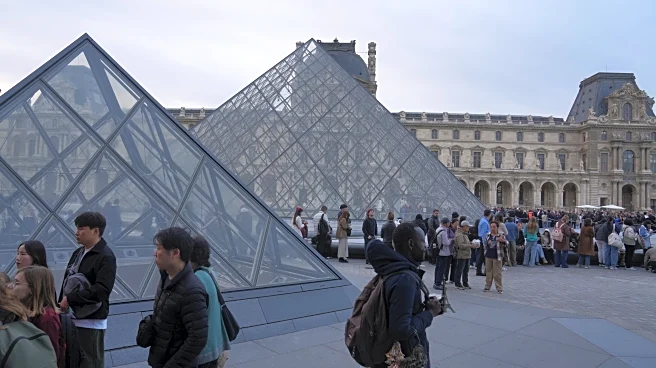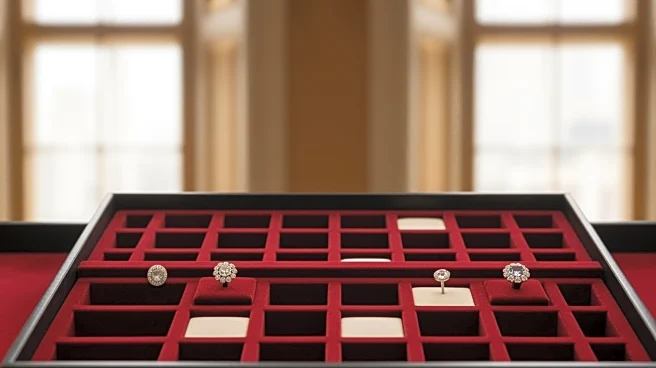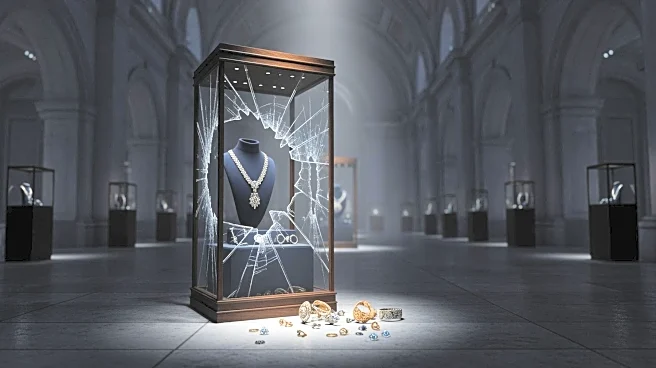What's Happening?
A daring heist at the Louvre in Paris resulted in the theft of eight priceless heritage objects, including jewels worth approximately €88 million ($102 million). The theft occurred on October 19, when
four masked thieves used power tools and a mechanized ladder to break into the Apollo Gallery. The heist, which lasted only seven minutes, was captured on video, showing the thieves escaping with the jewels. The incident has raised questions about the museum's security measures and how the thieves managed to execute the theft so efficiently.
Why It's Important?
The heist underscores vulnerabilities in museum security, particularly in high-profile institutions like the Louvre. It highlights the need for enhanced security protocols to protect valuable cultural assets. The theft has implications for museums worldwide, as it may prompt a reevaluation of security measures to prevent similar incidents. The loss of such significant cultural artifacts also impacts the art world and the public's access to historical treasures.
What's Next?
The Louvre is expected to implement new security measures as part of its ongoing renovation project, Louvre – Nouvelle Renaissance. This includes a security master plan with advanced surveillance and perimeter detection systems. The incident may also lead to increased collaboration between museums and law enforcement agencies to improve security strategies and prevent future thefts.
Beyond the Headlines
The heist raises ethical questions about the responsibility of museums to safeguard cultural heritage. It also highlights the challenges of balancing public access with security, as museums strive to remain open and welcoming while protecting their collections. The incident may prompt discussions about the role of technology in enhancing museum security and the potential for international cooperation in recovering stolen artifacts.


